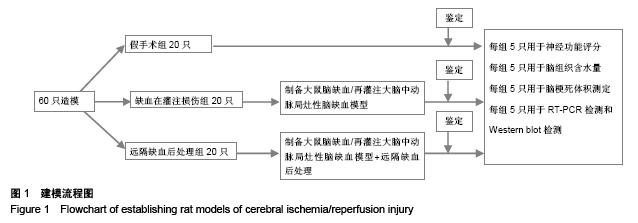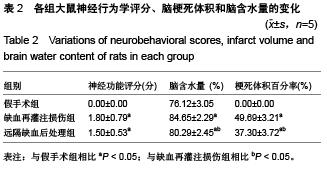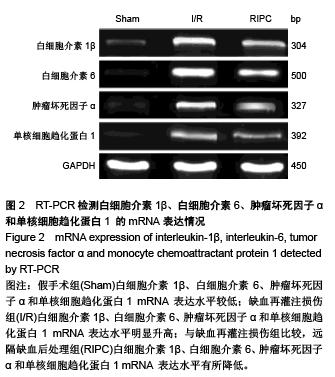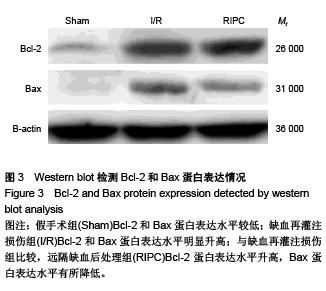| [1] Durukan A, Tatlisumak T. Preconditioning-induced ischemictolerance: a window into endogenous gearing for cerebroprotection. Exp Transl Stroke Med. 2010;2(1):2.[2] Yannopoulos FS, Mkel T, Niemel E, et al. Improved cerebral recovery from hypothermic circulatory arrest after remote ischemic preconditioning. Ann Thorac Surg. 2010;90(1): 182-188.[3] Ren C, Gao M, Dornbos D, et al. Remote ischemic post-conditioning reduced brain damage in experimental ischemia/reperfusion injury. Neurol Res. 2011;33(5): 514-519.[4] Ren C, Yan Z, Wei D, et al. Limb remote ischemic postconditioning protects against focal ischemia in rats. Brain Res. 2009;1288:88-94.[5] Peng B, Guo QL, He ZJ, et al. Remote ischemic postconditioning protects the brain from global cerebral ischemia/reperfusion injury by up-regulating endothelial nitric oxide synthase through the PI3K/Akt pathway. Brain Res. 2012;1445:92-102. [6] Zhou Y, Fathali N, Lekic T, et al. Remote limb ischemic postconditioning protects against neonatal hypoxic- ischemic brain injury in rat pups by the opioid receptor/Akt pathway. Stroke. 2011;42(2):439-444.[7] 严利,周文胜.脑缺血/再灌注损伤与高尔基体破裂的研究进展[J].中国实用神经疾病杂志,2015,3:70-72. [8] Liu Q, Zhou S, Wang Y, et al. A feasible strategy for focal cerebral ischemia-reperfusion injury: remote ischemic postconditioning. Neural Regen Res. 2014;9(15): 1460-1463.[9] Longa EZ, Weinstein PR, Carlotn S, et al. Reversible middle cerebral artery oclusion without craniotomy in rats. Stroke. 1989;20(1):84-91.[10] Carty M, Bowie AG. Evaluating the role of Toll-like receptors in diseases of the central nervous system. Biochem Pharmacol. 2011;81:825-837. [11] Pignataro G, Cuomo O, Vinciguerra A, et al. NCX as a key player in the neuroprotection exerted by ischemic preconditioning and postconditioning. Adv Exp Med Biol. 2013;961:223-240.[12] Oppenheim JJ, Tewary P, de la Rosa G, et al. Alarmins initiate host defense. Adv Exp Med Biol. 2007;601:185-194.[13] Qiu J, Xu J, Zheng Y, et al. High-mobility group box 1 promotes metalloproteinase-9 upregulation through Toll-like receptor 4 after cerebral ischemia. Stroke. 2010;41: 2077-2082. [14] Facci L, Barbierato M, Marinelli C, et al. Toll-like receptors 2, -3 and -4 prime microglia but not astrocytes across central nervous system regions for ATP-dependent interleukin-1β release. Sci Rep. 2014;4:6824.[15] Kim JH, Hong KW, Bae SS, et al. Probucol plus cilostazol attenuate ercholesterolemia induced exacerbation in ischemic brain injury via anti-inflammatory effects. Int J Mol Med. 2014;34(3):687-694.[16] Luheshi NM, Kovacs KJ, Lopez-Castejon G, et al. Interleukin-1alpha expression precedes IL-1beta after ischemic brain injury and is localised to areas of focal neuronal loss and penumbral tissues. J Neuroinflammation. 2011;8:186. [17] Emsley HC, Smith CJ, Georgiu RF, et al. Interleukin-6 and acute ischaemic stroke. Acta Neurol Scand. 2005;112:273-274.[18] Buttini M, Appel K, Sauter A, et al. Expression of tumor necrosis factor alpha after focal cerebral ischaemia in the rat. Neuroscience. 1996;71(1):1-16.[19] Del Zoppo GJ. The neurovascular unit, matrix proteases, and innate inflammation. Ann N Y Acad Sci. 2010;1207: 46-49.[20] Kong Y, Rogers MR, Qin X. Effective neuroprotection by ischemic postconditioning is associated with a decreased expression of RGMa and inflammation mediators in ischemic rats. Neurochem Res. 2013;38(4):815-825. |



.jpg)

.jpg)
.jpg)
.jpg)